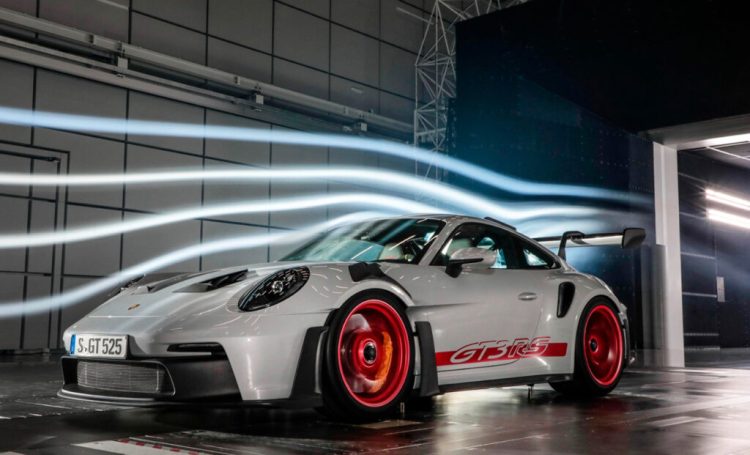The Porsche 911 GT3 is a car that stirs excitement in the hearts of driving enthusiasts, track-day lovers, and performance car aficionados around the world. Known for its precise handling, razor-sharp steering, and exhilarating driving experience, the GT3 has cemented its position as one of the most revered models in Porsche’s illustrious 911 lineup. However, with so much hype surrounding this iconic sports car, one might wonder: Is the Porsche 911 GT3 really the ultimate track weapon, or is it simply overhyped for the everyday driver?
In this essay, we will dive deep into the various aspects that make the Porsche 911 GT3 such an alluring choice for enthusiasts. From its engineering excellence and track-ready performance to its pricing and real-world usability, we will explore whether the GT3 lives up to its reputation as the pinnacle of Porsche’s performance offerings. Along the way, we’ll also address the criticisms, controversies, and comparisons to other high-performance vehicles, examining whether the Porsche 911 GT3 truly holds the title of the ultimate track weapon or whether it’s simply a case of automotive hype.
The Evolution of the Porsche 911 GT3: A History of Performance
The Porsche 911 has been a performance icon for over five decades, but the introduction of the GT3 variant marked a new chapter in the 911’s legacy. Launched in 1999, the first Porsche 911 GT3 was a car designed specifically for track performance, combining the 911’s legendary handling with a motorsport-inspired approach to engineering. Since then, each new generation of the GT3 has taken the performance envelope to new heights, pushing the limits of what a production car can achieve.
The 997-generation GT3, introduced in 2006, further refined the formula with improvements to suspension, aerodynamics, and engine performance. However, it wasn’t until the 991 generation that the GT3 really started to shine on both the road and the track. The 991 GT3 introduced the double-clutch PDK transmission, which brought lightning-fast gear shifts to the table, as well as enhanced aerodynamics and the famous naturally aspirated 4.0-liter flat-six engine.
Now in the 992-generation, the Porsche 911 GT3 continues to build on the successes of its predecessors while adding new technologies and refinements. With each iteration, Porsche has managed to preserve the raw, unfiltered driving experience that enthusiasts crave, all while improving the car’s performance and handling in ways that are difficult to comprehend without being behind the wheel.
Engine Performance: A Symphony of Power and Precision
One of the most defining aspects of the Porsche 911 GT3 is its engine. At the heart of this performance machine is a naturally aspirated 4.0-liter flat-six engine, which produces around 502 horsepower in the standard model and a staggering 518 horsepower in the GT3 Touring variant. This engine is a marvel of engineering, providing a crisp, high-revving experience that is unlike any other car on the market.
Unlike turbocharged engines, which rely on forced induction, the naturally aspirated flat-six engine in the GT3 revs to a stratospheric 9,000 rpm, offering a unique driving experience that blends power with a sense of precision and control. This engine configuration is a nod to Porsche’s racing heritage, providing not only exceptional acceleration but also an unmatched throttle response and immediate power delivery that is vital for track performance.
In terms of performance, the Porsche 911 GT3 can accelerate from 0 to 60 mph in just 3.1 seconds (for the PDK-equipped model). The car’s top speed reaches an impressive 197 mph, making it not only track-capable but also a thrilling option for high-speed driving on public roads. The engine’s soundtrack is another highlight, with the high-pitched wail of the flat-six creating a symphony that resonates with driving enthusiasts every time they put their foot down on the accelerator.
However, the true magic of the GT3’s engine lies in its ability to provide a driving experience that is as engaging as it is exhilarating. The power delivery is smooth, linear, and precise, allowing drivers to confidently tackle corners, accelerate out of turns, and experience the full force of the car’s power without feeling overwhelmed or out of control.

Handling: The True Essence of the Porsche 911 GT3
While the engine performance is undoubtedly a major draw for the Porsche 911 GT3, it is the car’s handling that truly sets it apart. Porsche has long been known for its engineering prowess when it comes to chassis dynamics, and the GT3 is no exception. The car’s suspension system, featuring double wishbones at the front and a multi-link rear setup, is specifically tuned to deliver exceptional handling, providing a level of grip and balance that is hard to match.
The 911 GT3’s rear-engine layout provides a unique driving characteristic: it allows for excellent rear-wheel drive handling, with the rear axle helping to plant the car during high-speed cornering. This layout, combined with the car’s precise steering and low center of gravity, allows the GT3 to carve through corners with a sense of agility and responsiveness that few cars can replicate.
Additionally, the Porsche 911 GT3 features rear-wheel steering, a technology borrowed from Porsche’s motorsport division. This system helps improve stability at high speeds, as well as maneuverability at low speeds, making the car more agile when navigating tight corners. It’s just one of many elements that contribute to the GT3’s reputation as a track-ready weapon that is equally at home on the road.
For those looking to take their driving experience to the next level, the GT3 also offers the option of a manual transmission (a fan-favorite among purists), as well as the PDK dual-clutch transmission, which offers lightning-fast gear shifts and enhances the car’s overall track performance. While the manual transmission requires more driver involvement, it enhances the raw, visceral experience of driving the GT3.
Design and Aerodynamics: Built for Speed
The design of the Porsche 911 GT3 is not just about aesthetics; it is about performance. Every curve, every surface, and every aerodynamic feature of the car is meticulously designed to maximize downforce, improve stability, and reduce drag. At the front, the GT3 features large intakes that help cool the engine and brakes, while the rear wing is adjustable to optimize aerodynamics depending on the driving conditions.
The rear wing on the GT3 is one of the car’s most iconic features, serving both an aesthetic and functional purpose. At high speeds, the wing provides substantial downforce, pushing the car into the ground for better grip and stability on the track. The fact that the GT3 is able to achieve such high levels of downforce without relying on massive, exaggerated wings is a testament to Porsche’s engineering excellence.
In addition to the performance benefits, the 911 GT3’s design is undeniably stunning. The aggressive stance, wide fenders, and sharp lines give the car an athletic and purposeful appearance. Every aspect of the car’s design is optimized for performance, but it also exudes a timeless, classic aesthetic that has come to define the Porsche 911 lineage.
Is the Porsche 911 GT3 Overhyped?
While the Porsche 911 GT3 has earned its reputation as one of the best track cars on the market, there is a question that often arises in the minds of enthusiasts and critics alike: Is the GT3 truly the ultimate track weapon, or is it simply overhyped? After all, with so many capable competitors on the market, does the GT3 really offer something unique?
To answer this question, we must look at the GT3 in the context of other high-performance sports cars. Cars like the McLaren 720S, Ferrari F8 Tributo, and Lamborghini Huracán perform at similar levels in terms of acceleration, top speed, and handling. However, the Porsche 911 GT3 stands apart with its exceptional balance, versatility, and overall driving experience.
The GT3 is unique because it can perform at an extremely high level both on the road and on the track. Many other supercars are designed primarily for track use, with a focus on extreme performance that often comes at the cost of everyday usability. The GT3, however, is a car that can be driven to and from the track, offering a practical driving experience while still delivering thrills when needed.
That being said, the GT3’s price tag is undeniably high, and for some, its raw, uncompromising performance may be overkill for daily driving. Its stiff suspension, loud engine, and aggressive exhaust note may not appeal to everyone, and the interior, while luxurious, lacks the level of refinement found in some of its more high-end competitors. Nonetheless, the GT3’s driving experience is unmatched, and for many enthusiasts, this is the price they are willing to pay for a true track-ready machine.
Conclusion: The Porsche 911 GT3 – Is It Still the Ultimate Track Weapon?
So, is the Porsche 911 GT3 still the ultimate track weapon, or has it become overhyped in the face of increasingly capable competitors? The answer, of course, depends on the individual driver. For those seeking a car that excels both on the track and on the street, the Porsche 911 GT3 remains an unparalleled option. Its balance, handling, and driving experience are second to none, making it the ideal choice for those who want a truly immersive driving experience.
However, the GT3’s uncompromising performance may not be for everyone. Its raw nature and high price point may make it more suitable for those who truly appreciate the thrill of driving and who want a car that pushes the boundaries of what a sports car can do. For those who simply want a fast car for the road, other options may offer better value or a more refined experience.
In the end, the Porsche 911 GT3 remains
a legendary machine, a true driver’s car that continues to embody the spirit of Porsche. Whether it is the ultimate track weapon or simply overhyped is a question that each enthusiast must answer for themselves. What is clear, however, is that the Porsche 911 GT3 remains one of the finest sports cars in the world, and its place in automotive history is secure.











































